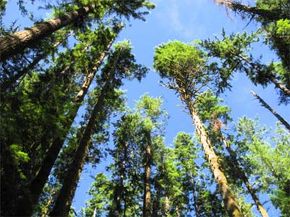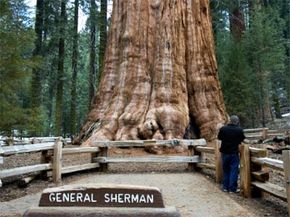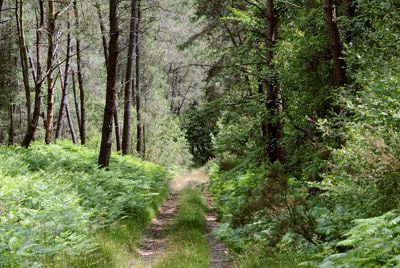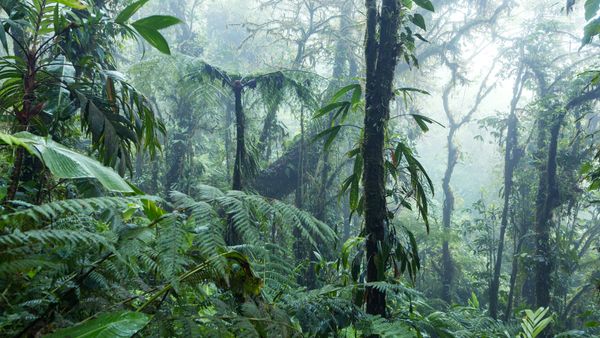Key Takeaways
- The maximum height of trees is limited by their ability to pull water up the trunk, with tracheids playing a crucial role in water transport.
- The diameter of tracheids, which are pitted dead cells that move water, decreases as you go higher in the tree, complicating water transport and eventually causing drought stress in the upper sections.
- Tall trees are more susceptible to xylem embolisms, where air bubbles block water passage, limiting the tree's height by reducing water and nutrient flow.
In 2008, a study proposed that the maximum height for a Douglas fir -- one of the world's tallest trees -- is about 453 feet (138 meters) [source: Kinver]. But why is there a limit? Trees are supposed to be nature's skyscrapers, impossible to hem in. This cap exists because trees can only pull water so far up their trunks.
The transporters in question are pitted dead cells, called tracheids, that move water from one cell to the next. The diameter of these all-important pits shrinks as you ascend into a tree's upper reaches, complicating water transport. Eventually the flow of water reaching the leaves and branches near the top dwindles off or stops, and the struggling sections experience "drought stress." They become dehydrated and die, establishing a de facto maximum height for that tree.
Advertisement
Researchers think these progressively narrowing tracheids help trees to survive. Height poses the problem of air bubbles. The taller the tree, the more likely it will develop a xylem embolism, a process in which air bubbles block the passage of water. (Xylem is the tissue that makes up a tree's vascular system and allows it to transport water and minerals from the roots to the rest of the plant.) A xylem embolism, then, is similar to a human air embolism, in which air enters the bloodstream and causes potentially severe complications. The tracheids try to prevent such air bubbles and withstand the increased pressure, but that protection comes at a price: less water and, the researchers suggest, a cap on how tall trees can grow.
Another tree height study, published four years prior, posited the maximum height of a tree at 426.5 feet (130 meters) [source: Amos]. The study examined coast redwoods, or Sequoia sempervirens, currently the world's tallest trees, and based the projection on factors like existing weather conditions, photosynthesis levels, water flow and carbon dioxide levels. Not surprisingly, "healthy" factors, like water flow and photosynthesis, decreased in the higher portions of the massive trees, while unhealthy factors, like carbon dioxide, increased. But ultimately, as with the firs, it all comes down to xylem.
These redwoods pull water up through their trunks as other trees do, although they can absorb some water from the fog that often surrounds them in their native California and Oregon environments. Before attaining their maximum height, they shoot up about 9.8 inches (25 centimeters) annually [source: Amos].
Next, we'll consider other ways of addressing tree size and talk about what may be the world's largest organism.
Advertisement



